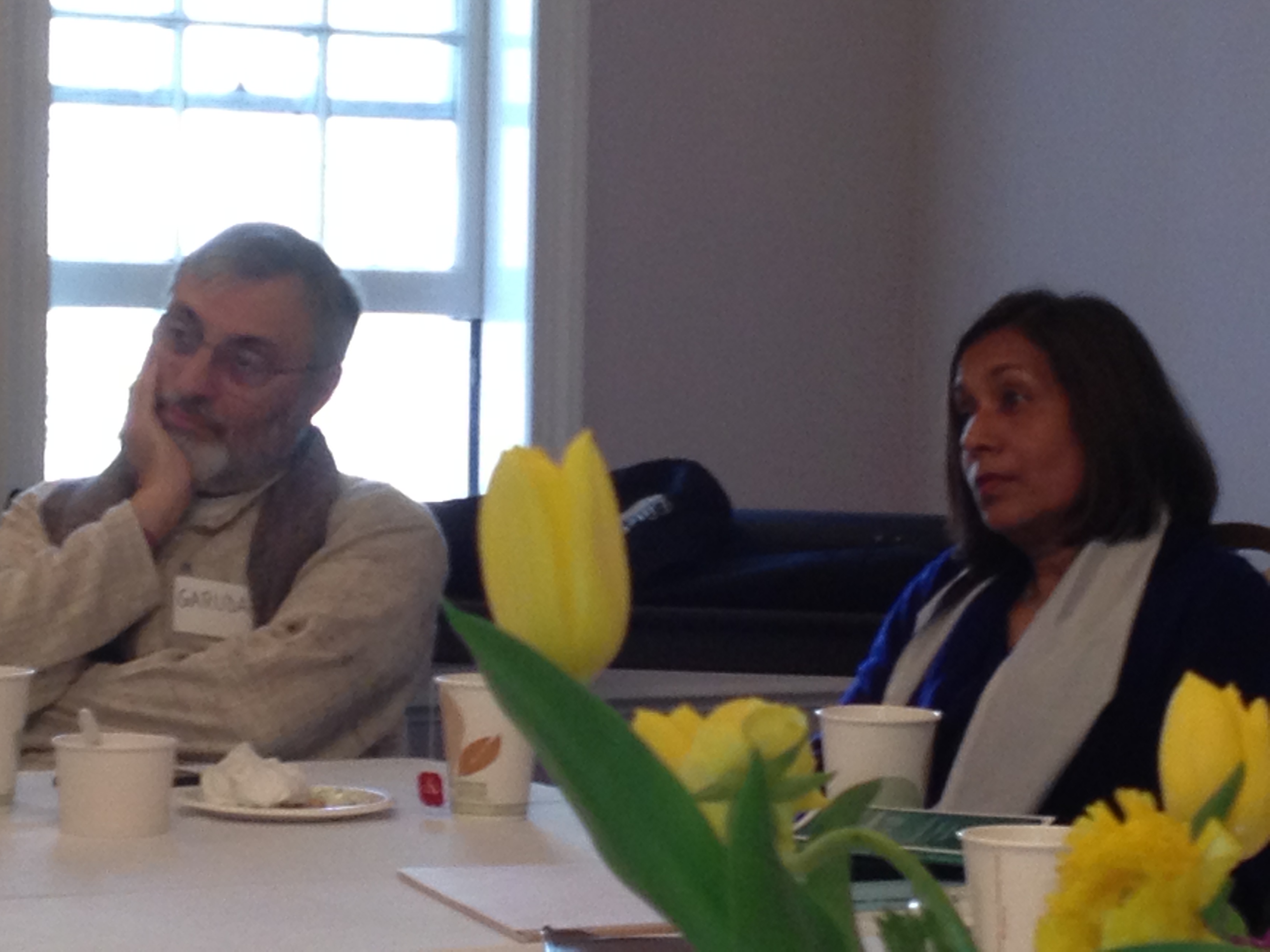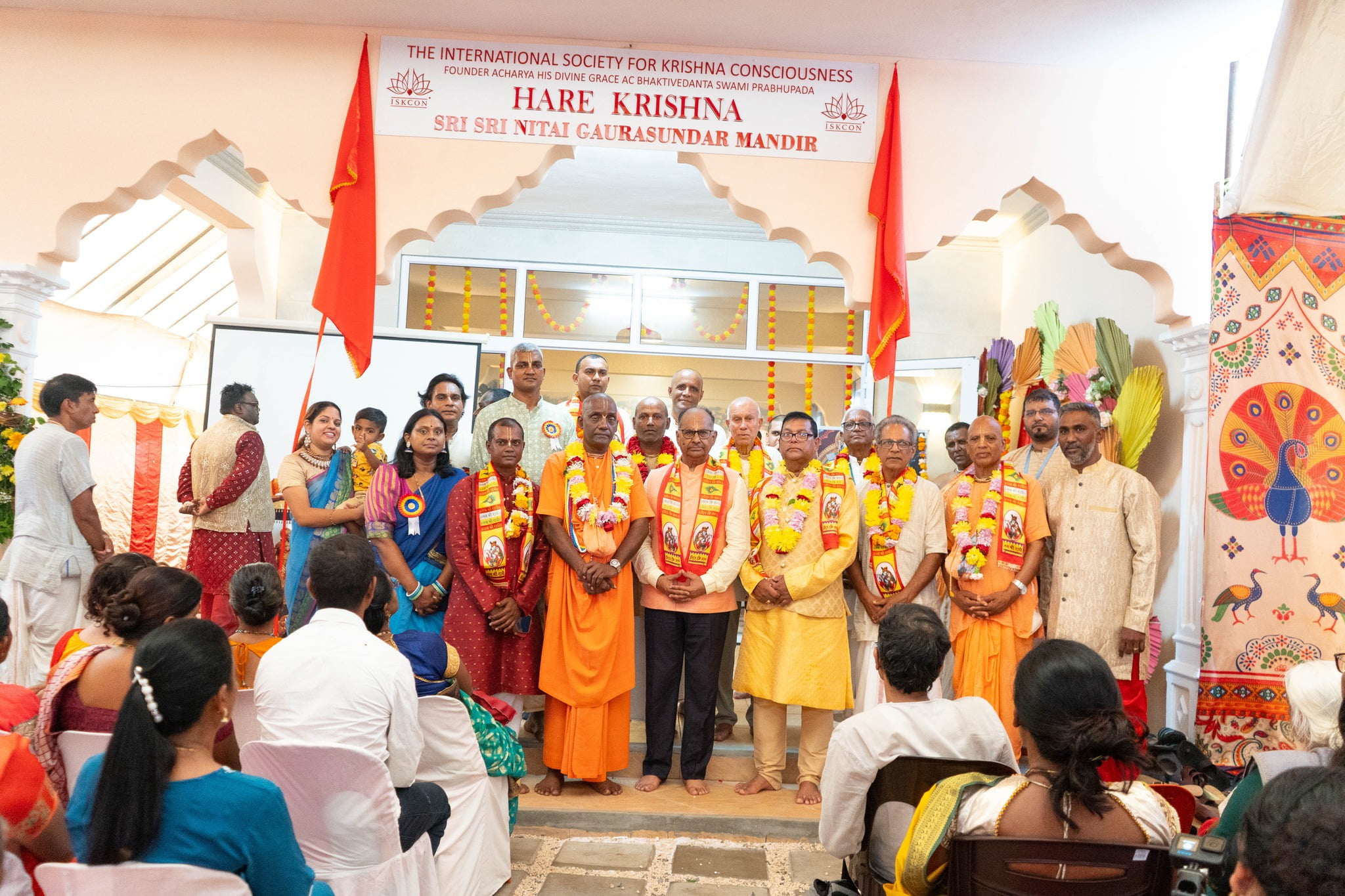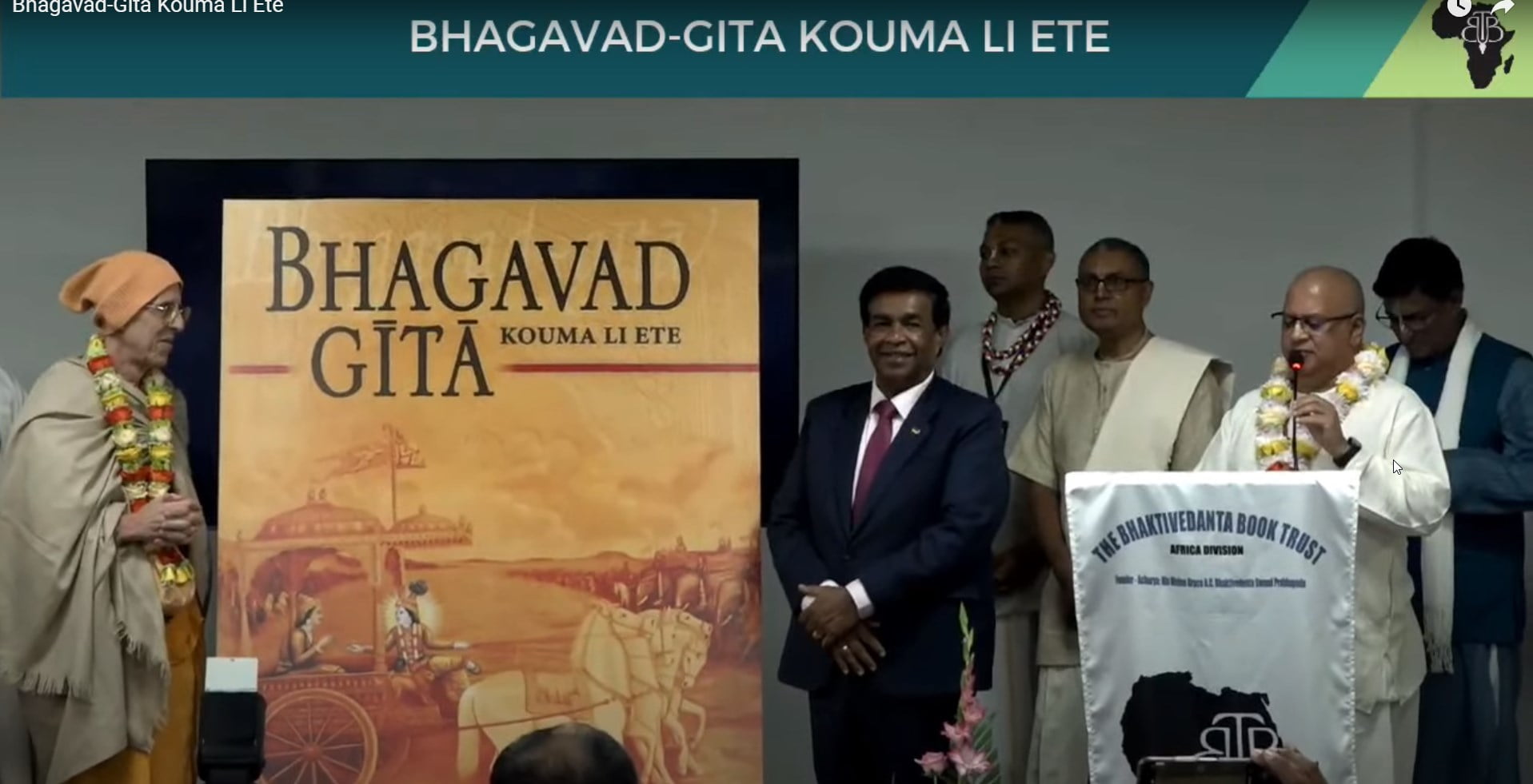Fourth Annual Vaishnava-Muslim Dialogue Studies “Sacred Aesthetics”
By Anuttama Dasa | May 16, 2013

Potomac, Maryland, USA—More than twenty scholars and practitioners, ten each from the Islamic and the Vaishnava Hindu traditions, spent a day together at a park-like retreat center just outside of Washington, D.C. on Saturday April 13 for an in depth discussion of “Sacred Aesthetics.”
It was the fourth annual meeting in the American capital city between Muslim and Vaishnava representatives. They have met to discuss a different topic each year, exploring both the similarities and differences between their two traditions, with a goal to enhance understanding and cooperation among their communities.
“I knew very little about Islam before these dialogues began,” said Rukmini dasi, a senior disciple of ISKCON Founder-acarya, A. C. Bhaktivedanta Swami Prabhupada. “I am amazed by the depth of spirituality our Muslim colleagues are sharing with us, and I find myself inspired in my own practice as a Vaishnava by this experience.”
Sacred Aestetics was chosen as the 2013 topic so as to examine how the two traditions experience the sacred in this world as represented through art, music, poetry, etc.
Dr. Graham Schweig presented first, on behalf of the Vaishnavas. He began by contrasting some of the Abrahamic traditions’ texts—those that advise against creating representations of the divine in this world—with the Indic traditions that take a more “liberal view”.
Schweig evoked chuckles from his audience when he noted a Hindu version of the well-known Biblical instruction to “make no images,” would—if such existed—likely read “make as many images and representations as you possibly can, in as many ways as you can.”
“I wanted to group to grasp the fact that Vaishnavas and the broader Hindu traditions engage the world of the senses in their pursuit of God,” Professor Schweig commented, “while the Abrahamic traditions in general are more apprehensive in doing so.”

Participants at the fourth annual Vaishnava-Muslim Dialogue discuss sacred art and sound.
In the context of dialogue, he explained, “Neither methodology is right or wrong. They are of different cultures and practices. Each is valid, and each has its own lexicon to support it. More importantly,” he noted, “each tradition can benefit by knowing the other better.”
During his one-hour presentation, Dr. Schweig played several recordings of Vaishnava bhajans, including both contemporary and traditional styles, from ISKCON artists Badahari das, Gaura vani and others. Through an examination of the lyrics and mood of these musical mediations, he highlighted the Vaishnava emphasis on God’s calling to the forgetful souls of this world, and as the longing of the devotee in separation of love for the Lord. Schweig also displayed several paintings depicting the rasa dance of Radha and Krishna, and God’s call for souls to return to His divine lila, or play, in the spiritual realm.
The presentation on Islamic Sacred Aesthetics was led by several members, including Dr. Sana Kirmani, professor at Towson University in Maryland. Dr. Kirmani read several of his favorite verses from the Koran to explore their rich glorification of God through poetry and sound. A young Bangaladeshi associate of Dr. Kirmani, Niriman, then sang several medieval and contemporary devotional songs in the Bengali language.
Many Vaishnavas present were pleased to see how the style and import of the Islamic songs and prayers paralleled their own tradition; much of Gaudiya Vaishnavism was first recorded in the Bengali language by medieval saints and followers of Sri Caitanya Mahaprabhu.
Niriman was requested by the group to also sing the Muslim call to prayer, which he agreed to do. Adam Yogtman next led several Sufi prayers, accompanied with a hand held drum, evoking different moods of expression within that tradition.
The musical experience led to so many requests for additional songs that a planned exploration of the role of architecture and calligraphy in Islam was postponed to a later meeting.
“Many close friendships evolve through these dialogues,” said Vineet Chander, of Princeton, New Jersey, who presented a paper at the first Vaishnava-Muslim Dialogue on the topic, The Name of God “ four years ago. “Its an opportunity to not only build a sense of shared community with our Muslim neighbors, but also, I believe, an opportunity for personal spiritual growth.”
The 2014 Vaishnava-Muslim Dialogue will discuss the topic: “Vaishnava and Muslim Approaches to Peace Building and Social Justice.”
Members of ISKCON interesting in promoting interfaith dialogues in their regions are encouraged to communicate with their regional ISKCON Communications Directors via communications@iskcon.org












